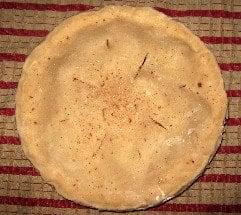Usnea (Usnea hirta and others) is a common, charismatic lichen found in Cascadia as well as many other forests across the globe. Its netted, hair-like body is created through a symbiotic relationship between algae (Chlorophyta) and fungus (Ascomycota). There are many species of usnea, but the one of highest medicinal value, sometimes called Old Man’s Beard, is identified by gently pulling apart a major branch of the lichen. If you have the correct species, the green outer layer will break (algae crust) and a stretchy white band of the inner layer (the fungal partner) will remain in tact. Usnea is very sensitive to air pollution, which is why you’ll rarely find it growing in cities. For me, abundant levels of usnea indicate I’m in a healthy, mature forest where it might be safe to harvest other plants as well (under stringent wildcrafting ethics of course!)
People around the world have used usnea for thousands of years for dying textiles, as cosmetic additives, in care for livestock and agricultural crops, and for human medicine. However, it escapes many herbal traditions that focus only on vascular plants. In Chinese medicine, usnea’s cool, drying tendency helps the body clear damp heat. It contains usnic acid that disrupts the cellular mechanics of Gram-positive bacteria, including the nasty stuff like Streptococcus and Staphylococcus, but leaves a lot of our natural microbiota unharmed. It’s especially powerful medicine for dampness or inflammation in the respiratory or urinary tract. Topically, usnea is also effective against MRSA, fungal infections including candida, and relieves mastitis in livestock (or humans).
Whenever on a walk in the woods, I’m always on the lookout for a fresh clump of usnea that has fallen to the forest floor. I find the best scores in fall when the rain has knocked fresh clumps down but they haven’t yet had months to deteriorate. Given usnea’s sensitive nature and slow growth pattern, it’s unacceptable to harvest usnea from a standing tree. After it has fallen to the forest floor, usnea holds up remarkably well due to its antibiotic and antifungal properties. Under cover and placed on paper or cotton, it dries rapidly and is sometimes ready to be packed away by the time I get home from my woodland adventure.
Usnic acid is not very soluable in water. It’s slightly better extracted in alcohol. It’s efficiently extracted in oil. However, the polysaccharides, which are the immune-stimulating constituents found in the white inner cortex of the lichen, are best extracted with heat. Therefore, different extraction methods are required depending on what actions you desire. Similar to mushrooms, a mother extract (high alcohol by volume extract followed by hot water extract) is the best way to benefit from both usnic acid and the polysaccharides. Read “Fungi Medicine: Mushrooms Offer Real Theraputic Value” for a more thorough discussion of this technique. The mother extract (20-40 percent alcohol by volume) makes a great spray for the back of the throat when that first tickle of a cold or flu is felt or if swollen lymph nodes are present. Spritz several times throughout the day and you may just nip it before the bad bacteria takes hold!
For the highest strength of usnic acid by volume, use refined oil of your choosing for an oil extraction. Place covered usnea oil in warm, sunny spot for several months. Sun is not always easy to come by in Cascadia, so I like the top of the water heater for oil extraction. This method is great for topical applications. You can also try it as a mouth rinse if you’re using oil pulling techniques. Creating a salve is the best way to store usnea oil for easy use.
I use usnea mother extract spray for the fungus that hangs out between my little toes; the alcohol helps dry them out. But if I encounter a dry burn, psoriasis, or subcutaneous MRSA sore, I use usnea oil. I read recently that usnic acid absorbs ultraviolet light, which makes me think usnea oil would be an effective sun block. I haven’t tested this yet so if anyone tries it, let me know how it works!
My favorite use for usnea is as menstrual pads or rustic tampons. The high absorbency of the usnea combined with the antibiotic effect make it a premium choice for my feminine hygiene needs. I first started using usnea when a surprise moon caught me off guard in the forest. I used usnea as an emergency alternative. Now, I use it on a regular basis because of its effectiveness. Plus, I enjoy the ritual of burying or composting the reddened usnea, returning my blood to the earth to nourish my garden or the forest. Give it a try using a dry, sculpted clump on a lighter day and see how you like it!
References:
Hinkle, Irene. 2012. Lichenology workshop at the Radical Mycology Convergence.
Rogers, Robert. 2011. The Fungal Pharmacy. North Atlantic Books, pp 486-491







